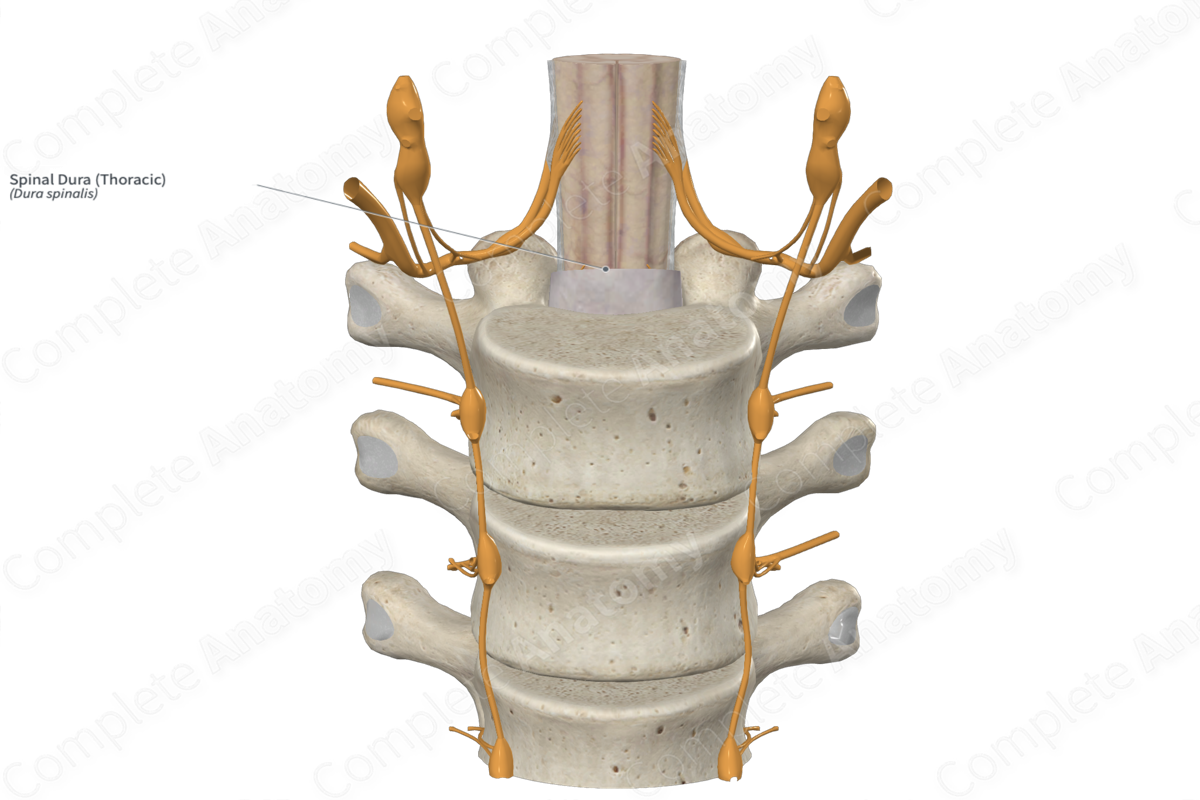
Structure
The spinal dura mater is a tough fibrous membrane that protects and encloses the spinal cord. It arises at the foramen magnum, to which it is attached. It also blends with the posterior aspects of the bodies of the second and third cervical vertebrae and to the posterior longitudinal ligament. Otherwise, it forms a distinctive layer that is separated from the tissues surrounds the vertebral column by an epidural space. Deep to the spinal dura is the subdural space, a potential space that separates it from the spinal arachnoid.
Distally, at around the level of the second sacral vertebra, the dura begins to taper and invests the thin, delicate filum terminale internum to form the filum terminale externum (or the coccygeal ligament). It descends to the posterior coccyx to blend with its periosteum.
Related parts of the anatomy
Key Features/Anatomical Relations
The spinal dura mater forms the dural sac, running from the foramen magnum rostrally to the S2 vertebrae caudally. The spinal dura extends laterally with nerve roots to cover nerves as they emerge from the spinal canal. The dura mater blends with the epineurium of the spinal nerves.
Learn more about this topic from other Elsevier products
Dura Mater

A cephalocoele is a defect in the skull and dura with extra-cranial extension of intra-cranial structures.




